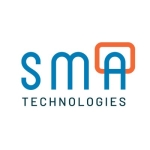What is our primary use case?
I have used UiPath Orchestrator, and we have created both attended and unattended robots for our clients.
We have been using the new AI and OCR technologies with UiPath, and we are currently trying to implement the Citrix log capability that was recently introduced.
We are not running our automations in a virtual environment. When we automate any Citrix-based application, it's all email-based. There is a Citrix receiver and we communicate with that, which helps automate Citrix applications much faster.
Most of the clients I had seen have been running in virtual environments, although I have seen some of our clients running on the desktop. We have also seen hybrid scenarios.
One thing is that virtual environments can be standardized pretty quickly. So, that's an advantage. Normally, the companies, which are leaning towards more cloud now, will be happy with this. So, I think that is one factor. As you move virtual machines to the cloud you can migrate your bots to the cloud faster.
I have worked on various different domains including the public sector, commercial, healthcare, energy, utility, and federal. These are the different customers for which we are implementing solutions. Now, the customers are moving towards AI and natural language processing. They are more into chatbots, how they can use artificial intelligence, making use of data science, and putting more machine learning on board.
With respect to how easy it is to automate our company's processes, on a scale of one to five, I would rate it two and a half. I'd say it is about marketing. You can develop anything. There are very small processes that you can develop with having minimal experience. However, when you start implementing complex processes, I would say you need to be a background developer.
On a scale of one to five, judging how beneficial it is, I would rate the training a five. All of my team members have been using UiPath Academy for training and certification. It's not just with the U.S., but outside the U.S. as well.
From the point that a UiPath license is purchased until the first robot is ready totally depends upon what use case we are implementing. There are different methodologies that people use. Some build the bot without exceptions and it can go to production. Like a very simple process can go to production in two to three weeks. A more complex bot will take eight to ten weeks, and depending upon the process, it can go longer. I have seen tasks when a human is performing the job and it takes him around twenty minutes per transaction. But, when the bot comes in, it actually completed that same transaction in five minutes. But, to develop that five minutes of processing, it was understanding system availability and testing. Then you have to do load testing. It takes ten weeks or so.
Our clients decide to implement RPA for several reasons. The first reason, of course, is to have work completed faster. Second, when there is a workload, you can work on it more efficiently and with fewer people. Consider an open enrollment in October, where the open enrollment starts at 10:00 AM and there are a lot of transactions flowing in. Now you have to hire a human and train them. With the bot, we can just scale up instead. Finally, the bots are errorless.
How has it helped my organization?
In terms of eliminating human errors, it is a one hundred percent reduction. When you implement bots, it's error-free, as long as you have implemented it properly. The robot does not get tired, so the error rate is actually zero.
I would say, more important than saving money, it's more about business growth and client satisfaction. Our clients all serve someone, so it's more about customer satisfaction. The employees benefit because sometimes they have to do repetitive jobs, and they get bored with them. So, they can use automation and apply their brains somewhere fruitful.
Overall, automation is always improving customer satisfaction. Response time is improved, errors are reduced, and productivity increases because work is being done around the clock.
What is most valuable?
The most valuable feature of this solution is that it is user-friendly. I was a coding developer, so I know how to write code, and I've also used other RPA tools. This solution is workflow-driven, where you can easily relay what you had written. If someone has to read the code, it is very readable.
Second, I've always been a Microsoft technology guy, and they have provided the facility where we can implement any of the C# code into it. We have .NET code, and that's why I like it. We say it's a tool, but I would say it can also be leveraged as a custom coding tool. We can actually do whatever custom code you want.
What needs improvement?
I would like to see more machine learning features and capabilities for more accurate OCR.
What do I think about the stability of the solution?
With respect to the stability, on a scale from one to five, I would rate this solution a five. It's stable. The thing is, with the software, we have a few glitches here and there, but what I like is that we have the right support. When we actually reach out to verify, we get a faster response and also a faster solution. The responses are effective and fast.
How are customer service and technical support?
The responses are effective and fast.
Which solution did I use previously and why did I switch?
I have seen some cases where there is backend automation, but it was a series of processes. With this solution, they combine all of it into one. There were few human-interactive automations. Rather, it was batch-job processing of databases, etc.
How was the initial setup?
The complexity of the initial setup depends upon the client.
There is admin access and a whole lot involved. There are safety concerns from client to client with their security policies, and it may take time. I have hardly seen any clients where it's easy to set up, within a week or two. It takes longer because of the client's own security policies. You have to get a lot of clearance because there is a lot of admin access that UiPath needs. If I had to rate the setup, I would give it three out of five.
A dedicated person is required to maintain this solution. The same way humans get sick and need doctors, the bots get sick and you need a maintenance person.
What was our ROI?
I would estimate that our clients see ROI, on average, in one year. It depends on what they are trying to save. If it is FTE then eventually you'll be getting everything. If you are trying to have a faster experience, it totally depends. There is a development cost and a tool cost that have to be considered. It also depends on the complexity of the processes and how long they take to code.
Which other solutions did I evaluate?
We have clients who use almost all of the RPA solutions. The most common ones are Automation Anywhere, Blue Prism, and WorkFusion. We don't recommend. We advise. We can implement regardless of the solution.
The choice is dependent on various factors. What we have seen is that most companies have a technology stack. Some have a Java shop, while others have a Microsoft shop, or others will use a different technology stack again. People tend to choose what best matches their technology.
What other advice do I have?
When we started initially, most of the business users were afraid that the bot was going to take their job. That is not the case. The bot is actually helping them with their substantive, day-to-day work, by handing the repetitive work. So, after seeing the benefits, I've seen a lot of users now leaning towards bots, and they are very happy with RPA.
I am looking forward to the new version where they have implemented libraries. One thing they have done is merged the media packages into one.
From a cost perspective, there is a difference between attended and unattended bots. I have implemented both, but most of the plans are moving towards unattended. The unattended bots come at a higher cost. For an attended bot, it is being used while the user is at the machine, and is more like an interactive bot. While there is a huge difference in cost, I still prefer unattended bots. I see less benefit in using attended bots and say that I would use unattended eighty percent of the time.
When I'm implementing an unattended bot, I am actually putting it on a machine. I can run as many unattended bots as I need on that one machine. I can do this with attended bots, but the thing is, you need user interactions. Now think in this way, if the user is not there, the attended bot is waiting for that user. Secondly, I see some of the use cases that are really helpful and suitable for attended, but I would rather go with unattended because it's going to show that I don't need a physical machine and it will be more efficient.
My advice to anybody who is considering this solution is to start with the UiPath Academy and do the training. Then, look through some videos, implement a process or two and see how comfortable you are. At this point, you can move forward with it. I would say that it is pretty easy to understand.
This is a good solution, but I'm a hardcore custom developer. I still want that flexibility in my hand to do whatever I can do. With a tool, there are always limitations in terms of policy and rules.
I would rate this solution an eight out of ten.
Which deployment model are you using for this solution?
On-premises
Disclosure: My company has a business relationship with this vendor other than being a customer. Partner.

















